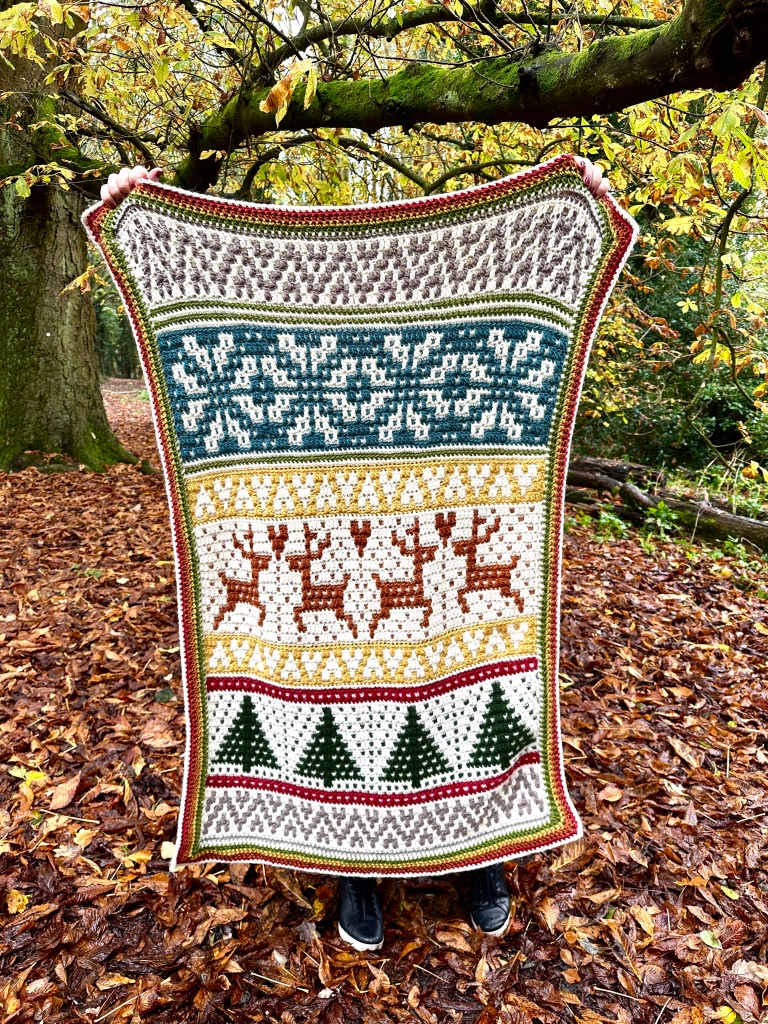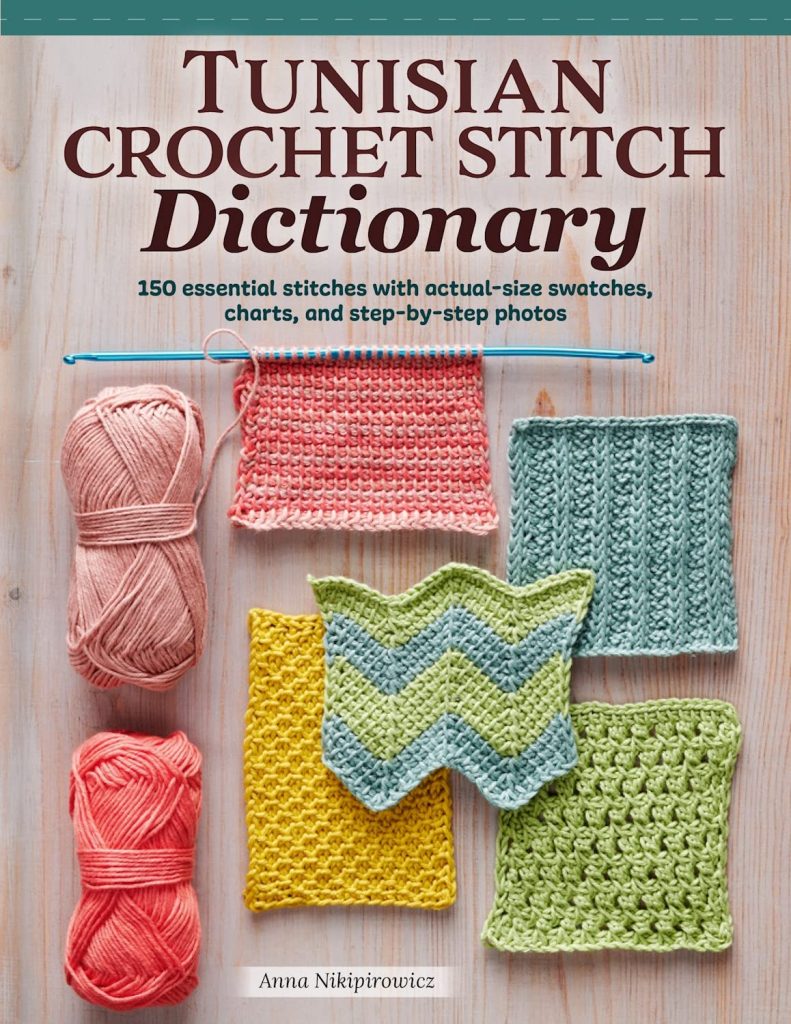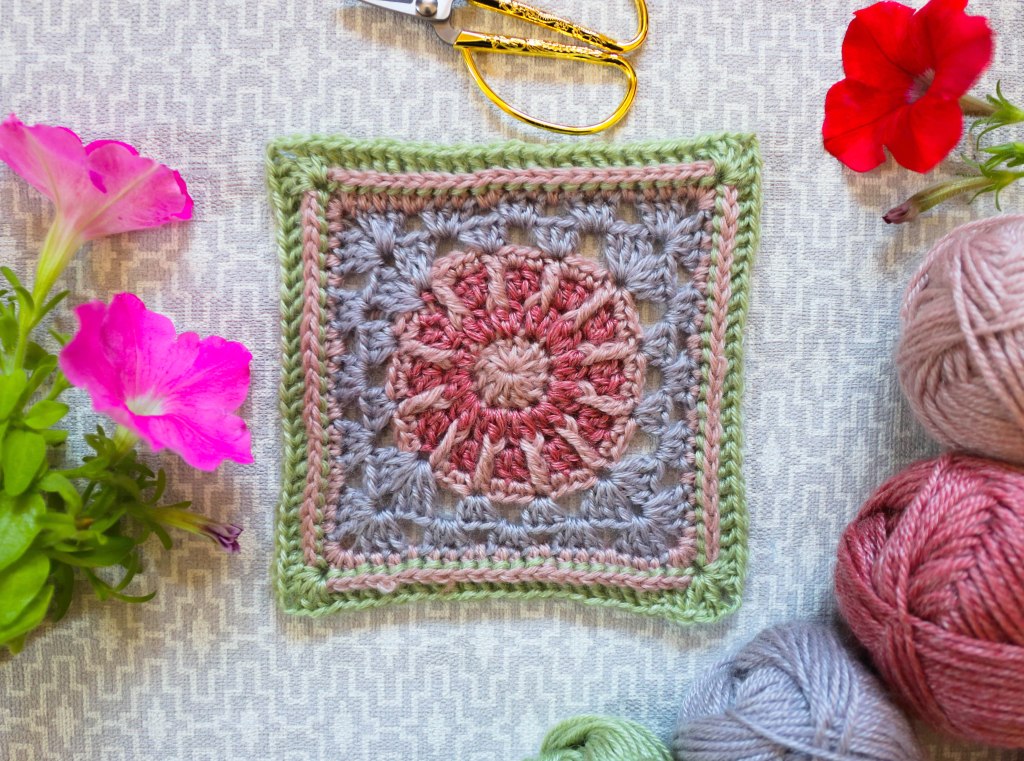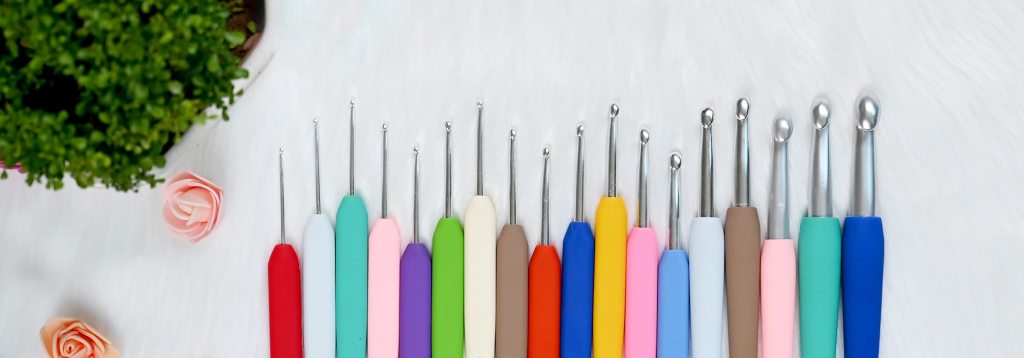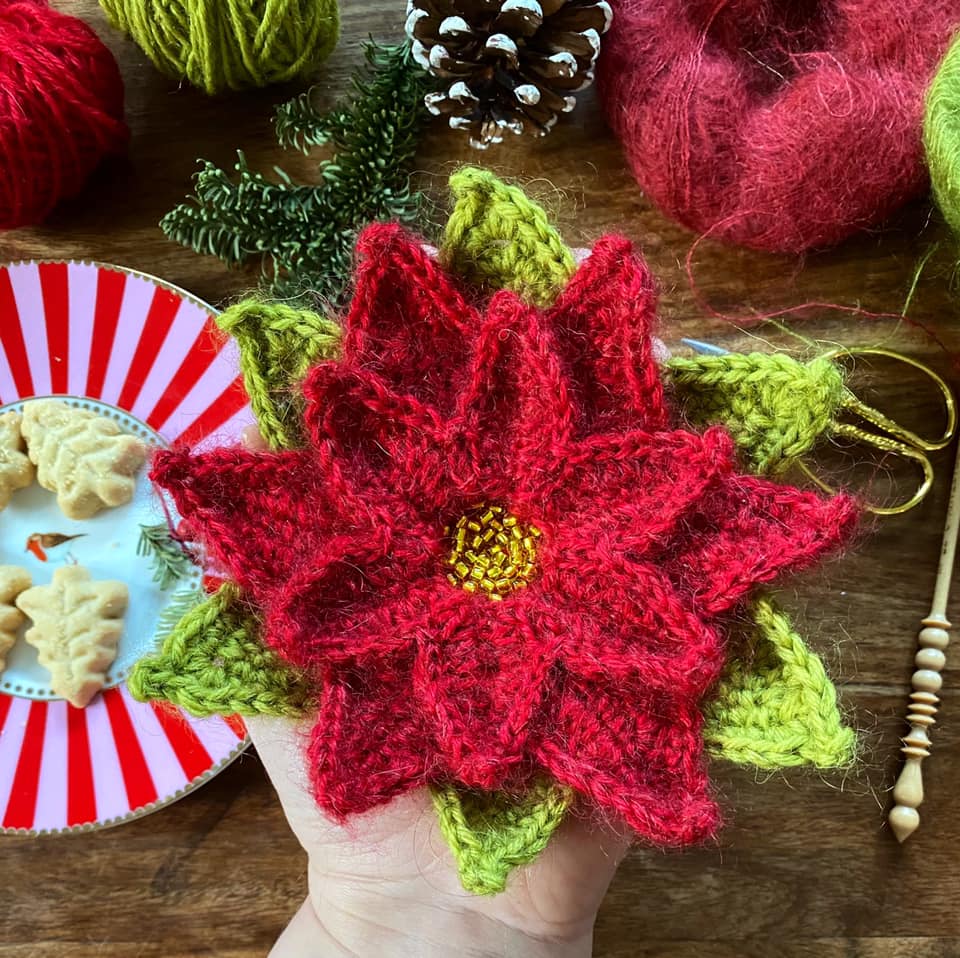
I made this gorgeous brooch a couple of years ago, but I never took notes for the pattern. Then I lost the brooch, then found it and then I received a message asking for the pattern, I’m so sorry I don’t remember who the message was from.
I have promised I’ll figure out how I made it and post the pattern. Unfortunately, I got very busy with writing a new book and teaching, and the poinsettia completely slipped my mind.
I just managed to get to it now, I’m so sorry for the delay. This is a very basic pattern of what I can see without undoing the brooch.
Yarn: for the flower petals I have used 4ply and kidsilk haze held together in red. For the leaves I have used DK or worsted in green.
3.5mm crochet hook
The beads in the centre are sewn on after the flower is made, you don’t have to use beads, make the centre in a different colour or use a button.
The poinsettia is made in three parts:
Part 1 – upper part – small petals in red all worked in one.
Part 2 – middle part – medium petals in red worked separately, make 6.
Part 3 – lower part – large petals in green worked separately, make 6.
Pattern notes:
- The pattern is written using UK terminology, US conversion in the abbreviation list.
- When instruction say for example: 2dc it means to work 1 dc in next 2 sts. When it says: 2tr in next st, it means to work 2tr in one st.
Abbreviations
[] – rep as many times as directed within the square brackets, ch – chain, ch-sp – chin space, dc (US sc) – double crochet (US single crochet), htr (US hdc) – half treble (US half double crochet), tr (US dc) – treble (US doubler crochet), sl st – slip stitch, st(s) – stitch(es), rnd – round, picot – ch3, sl st to first ch.
Part 1
Foundation rnd 1: work ch1, 6dc, into an adjustable ring, enclosing the yarn end as you work, pull tight on the yarn end to close up opening, sl st to first dc.
Foundation rnd 2: ch1, 2dc in every st, sl st to first dc. (12 sts)
You will now create petals by working chains and dc and joining by sl st to stitches of foundation rnd 2.
Rnd 1: [ch6, 1dc in second ch from hook, 1dc in each ch to end, sl st to next st of foundation rnd 2, sl st in next st] 6 times. 6 petals made.
You will now work around each petal.
Rnd 2: [1dc in other side of chains of petal, 1htr, 1tr, 1htr, 1dc, ch3, working in dc of petals, 1dc, 1htr, 1tr, 1htr, 1dc] 6 times, each petal has been worked.
Rnd 3: [miss first dc, sl st in first htr of next petal, 2sl st, 1dc, [2htr, picot, 2htr] all in next ch-3 sp], 1dc, 3 sl st] 6 times. Sl st to first sl st and fasten off.
Part 2
Make 6 petals in red
Make 10 ch.
Rnd 1 (RS): 1dc in second ch from hook, 1dc in every ch, ch2, working on the other side of foundation ch, 1dc in every ch to end, sl st to first dc. (18 sts)
Rnd 2: ch1, 1dc in first st, 1dc, 2htr in next st, 1tr, 2tr in next st, 1tr, 2htr in next st, 2dc, [1dc, ch3, 1dc] all in ch-2sp, 2dc, 2htr in next st, 1tr, 2tr in next st, 1tr, 2htr in next st, 2dc, sl st to first dc. (26 sts)
Rnd 3: ch 1, 1dc in first st, 12dc, [2htr, picot, 2htr] all in ch-3sp, 13dc, sl st to first dc. (30 sts)
Fasten off
Part 3
The pattern for leaves is the same as for part 2 petals, just in thicker green yarn, make 6 as well.
Making up
Weave in all ends. Place petals of middle part at the back of upper part, so they are positioned in between the upper petals, and sew in place. Repeat the same with leaves. Sew in beads to the centre.
I’m so sorry the pattern is so basic, but I’m suffering with very bad COVID and don’t seem to have any energy for anything at the moment. I’ll do more detailed pattern and video when I feel better. Hope you enjoy making the poinsettia nevertheless.
Merry Christmas to those that celebrate, hope you all have the most wonderful time.
Both of us have very bad COVID so unfortunately Christmas is cancelled, we cannot see anyone, we will just try to feel better.
Anna x

